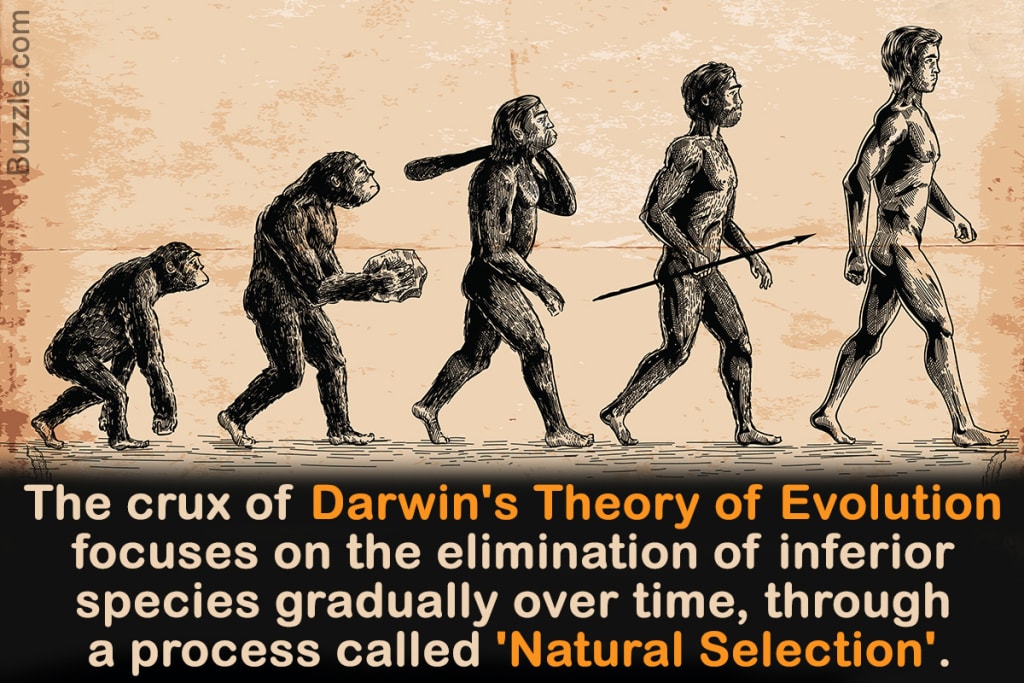Is Evolution Merely a Theory or a Fact? Where Were Our Ancestors From?
Charles Darwin and the Theory of Natural Selection

Is Evolution Merely a Theory or a Fact? Where Were Our Ancestors From?
Hello friends!
Approximately 4 billion years ago, life began on Earth. After billions of years of evolution, numerous species of plants and animals evolved. All these trees, plants, animals, and creatures that you see today, all of them exist due to evolution. One of these species is Homo sapiens, that is, humans. But the question arises, if humans came from apes, then why do apes still exist? Why didn't all these monkeys, chimpanzees, and gorillas evolve into humans? Such questions are often asked by people. Some people deny evolution. They say it's a lie. How true is this evolution theory? Is it merely a theory or a fact? And how did these different types of animals evolve? Let's find out.
Clearing the Misconceptions
Evolution theory doesn't claim that monkeys became humans. Instead, it claims that all chimpanzees, gorillas, monkeys, and humans have the same ancestor. And that ancestor is not alive today. If you want to visualize evolution, imagine a tree. A tree starts with just one stem. Then it grows branches. Then it grows smaller branches. If it keeps growing such, you see the tips of the tree. Those endpoints are all the living creatures that exist today. But one question that will still linger in your mind is, why did some of our ancestors evolve into humans and some into chimpanzees and some monkeys? Why? You will get the answer later in this article.
Charles Darwin and the Theory of Natural Selection
In 1859, Charles Darwin wrote the historic book ‘On the Origin of Species’. In this book, he talked about the theory of natural selection. Now, when you hear the term ‘theory of natural selection’, you might feel that it is a mystical thing. There must be some complicated inner engineering in all living beings. But, no. It’s actually very simple. Whenever there is reproduction, whether it is in humans, animals, trees, or plants, genes pass on from one generation to another. Our genes pass on to our children. But the genes pass on with certain mutations. There are slight changes in the genes. You can see some variations. And these variations are often inherited by future generations.
For example, if you have brown eyes and your children have green eyes, it means that a mutation has occurred in their genes. The genes that decide the color of the eyes mutated. It is possible that the next generation of their children will also have green eyes. Often, these variations are beneficial and harmful, depending on the environment. Some survive and some die out. This process is called natural selection. The theory of natural selection works by determining who fits the situation the best, rather than who is the biggest or most powerful.
The Concept of 'Survival of the Fittest'
The term "Survival Of The Fittest" is often misunderstood. It doesn't necessarily mean the physically strongest individual will survive. Instead, it means the one who fits best in the environment around them. Fit doesn't mean the biggest or most powerful; it means the best adapted to their surroundings. Different environments require different adaptations. For example, during the era of dinosaurs, some evolved to be huge to protect themselves from predators. But when food was scarce, being smaller was advantageous to reduce food requirements. This showcases how species evolve based on their environment.
From Fish to Mammals: The Tree of Evolution
The journey of evolution is not linear. It involves multiple branches and changes over millions of years. It began approximately 4 billion years ago when life started in water. The first ancestor was a simple organism known as the First Universal Common Ancestor (FUCA). This ancestor was not even a cell, but it marked the beginning of life. Over time, this life evolved, leading to the Last Universal Common Ancestor (LUCA), which was a unicellular organism.
The process continued, resulting in different branches of life, from photosynthetic cyanobacteria to complex multicellular organisms. Evolution led to the emergence of various animal groups, such as reptiles, dinosaurs, and eventually, mammals. The mammalian evolution included the development of placental mammals, marsupials, and monotremes. Each of these groups adapted to their environments in unique ways, showcasing the diversity of life driven by evolution.
The Four Forces of Evolution
Evolution is guided by four main forces: genetic mutation, natural selection, genetic drift, and gene flow. Genetic mutations introduce variations in genes, which can be beneficial or harmful depending on the environment. Natural selection favors traits that enhance survival and reproduction. Genetic drift refers to random changes in gene frequencies due to events like population bottlenecks or founder effects. Gene flow occurs when populations migrate, leading to the exchange of genes between different groups.
Evolution: A Fact Supported by Evidence
Evolution is not just a theory; it is a fact supported by extensive evidence from various scientific fields, including genetics, paleontology, and comparative anatomy. The fossil record provides a timeline of species' transformations over millions of years. DNA analysis showcases the genetic connections between different species. The convergence of evidence from multiple disciplines leaves no room for doubt regarding the reality of evolution.
Conclusion and Further Exploration
The journey of evolution is a fascinating narrative that spans billions of years. From the simplest organisms to complex mammals, the process has shaped the diversity of life on Earth. Understanding evolution is not just about tracing the past; it also has implications for our understanding of biology, genetics, and the interconnectedness of all living beings. As we explore the origins of life, we gain a deeper appreciation for the intricacies of the natural world and our place within it.
FAQs
Is evolution just a theory?
No, evolution is a well-established scientific fact supported by extensive evidence from various fields.
Did humans really evolve from apes?
Humans share a common ancestor with apes, and both lineages have evolved independently over time.
What drives evolution?
Evolution is driven by genetic mutations, natural selection, genetic drift, and gene flow.
Is genetic diversity important in evolution?
Yes, genetic diversity allows species to adapt to changing environments, increasing their chances of survival.
Why is understanding evolution important?
Understanding evolution helps us grasp the origins of life, the diversity of species, and our interconnectedness with all living beings.
For more in-depth information on various evolutionary topics, feel free to explore related articles and resources. And remember, evolution is not just a concept; it's a journey that continues to shape the world around us.
About the Creator
Sameel Iqbal
I am expert in article and story writing






Comments
There are no comments for this story
Be the first to respond and start the conversation.